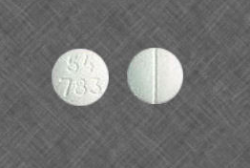call 800-291-1732 (Who Answers?) for a free referral.

Let us help you get the help you need to recover from your codeine addiction.
Codeine sulfate is an opioid analgesic that is typically used to treat pain, cough and sometimes to suppress premature labor. The drug is related to morphine in some ways but is far less potent than morphine.
Codeine is the second-most predominant alkaloid found in opium and is extracted from the Iranian poppy. In some patients, Codeine is less effective as an analgesic while in others it can provide highly effective analgesic effects. This is largely dependent on the method in which each individual metabolizes codeine. When codeine enters the body, a conversion occurs in the liver that causes a cataclysmic change of the drug which morphs it into morphine. A small percentage of Caucasians, Asians and Arabs are considered poor metabolizers and receive very little effects when Codeine is prescribed as an analgesic.
If you or someone you love is addicted to codeine, call our helpline at 800-291-1732 (Who Answers?) to talk to a counselor for free.
We can help you find effective treatment for codeine addiction in your area.
Here you will learn about:
- How Codeine is used and what it may be prescribed for
- What you should do if you miss a prescribed dose of Codeine
- Precautions that you should discuss with your healthcare provider prior to taking Codeine
- How Codeine may interact with other drugs
- What you should look out for if you have already taken Codeine
Absorption of Codeine
Because Codeine is absorbed from the gastrointestinal track, maximum plasma or blood concentration occurs within one hour of taking the drug. Food does not have a significant impact on the rate at which Codeine is absorbed or the extent in which the Codeine sulfate produces analgesic effects though some doctors will recommend taking the drug with food to prevent upset stomach for occurring.
The drug is extensively distributed into the tissues of the body and has a very low plasma protein biding which means that although Codeine may be present in the system, it tends to show up most in tissue versus the blood. Approximately 7-25% of codeine binds to plasma proteins with the remainder of the drug binding to tissues within the body.
Half Life & Elimination
It is estimated that codeine has a half life of about 3 hours which means that approximately 50% of the dose is eliminated or metabolized through the body within 3 hours of taking or being administered the medication. 90% of the total dose is excreted through the kidneys of which a small percentage is unchanged or un-metabolized codeine. The remaining dose is typically eliminated from the body within about 7-10 hours.

 How should I use Codeine? -
Codeine is typically prescribed for the treatment of mild to moderate pain and is sometimes prescribed to reduce coughing. Most of the time, codeine is used in combination with other medications such as promethazine or acetaminophen. It belongs to a class of medications known as narcotics or opiate analgesics. Codeine is also a medication classified ...
How should I use Codeine? -
Codeine is typically prescribed for the treatment of mild to moderate pain and is sometimes prescribed to reduce coughing. Most of the time, codeine is used in combination with other medications such as promethazine or acetaminophen. It belongs to a class of medications known as narcotics or opiate analgesics. Codeine is also a medication classified ...  Interactions with Other Drugs -
Codeine is an opiate analgesic medication that is often prescribed for the treatment of pain or the reduction of cough. The drug may cause interactions when taken with other drugs so it’s important to talk with your doctor about any medications that you may be taking prior to taking codeine. Here’s a look at how ...
Interactions with Other Drugs -
Codeine is an opiate analgesic medication that is often prescribed for the treatment of pain or the reduction of cough. The drug may cause interactions when taken with other drugs so it’s important to talk with your doctor about any medications that you may be taking prior to taking codeine. Here’s a look at how ...  Precautions & What to Look Out for While Taking Codeine -
If you have been prescribed codeine there are certain precautions that you should take prior to your first dose as well as some things that you should be on the look out for during the time that you are taking the medication. Be sure to tell your doctor or your pharmacist if you are allergic to ...
Precautions & What to Look Out for While Taking Codeine -
If you have been prescribed codeine there are certain precautions that you should take prior to your first dose as well as some things that you should be on the look out for during the time that you are taking the medication. Be sure to tell your doctor or your pharmacist if you are allergic to ...  What Should I tell My Healthcare Provider before Taking Codeine? -
It’s important to be open and honest with your healthcare professional to ensure your own safety, proper diagnosis and treatment. You should talk with your doctor about any past or present drug or alcohol abuse, your medical history, and your lifestyle prior to taking codeine. Your doctor will need to know the truth about the ...
What Should I tell My Healthcare Provider before Taking Codeine? -
It’s important to be open and honest with your healthcare professional to ensure your own safety, proper diagnosis and treatment. You should talk with your doctor about any past or present drug or alcohol abuse, your medical history, and your lifestyle prior to taking codeine. Your doctor will need to know the truth about the ...